Bronze coloured facade for Peninsula Hotel in London
With its bronze coloured facade, the new luxury hotel The Peninsula London, being built close to the Buckingham Palace, gives a modern response to this location, with high quality detailing and material use. The design is reminiscent of an Italian Renaissance palazzo and symbolises the quality of the architecture. Also the distinctiveness of the use will add to the character of Westminster. Located adjacent to Hyde Park and Green Park, the hotel will offer sweeping views over Buckingham Palace Gardens. The property will comprise of 190 hotel rooms and 24-28 private residences, with luxury facilities including a spa and world-class restaurants.
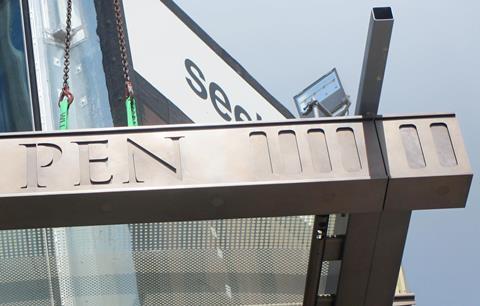
Facade construction specialist seele is responsible for the design, fabrication and installation of various facade and door systems as well as canopies of approximately 22,000sqm in different designs. Characteristic for the design by Hopkins Architects is the bronze colour, which is applied to the facade elements with patinated brass and anodised aluminium - challenging surface materials.
Unique material competence
Bronze and brass have enjoyed increasing popularity in architecture in recent years, especially in the UK. In combination with various manufacturing processes, joining techniques and surface finishing, there are many possibilities for product function and design. For the Peninsula Hotel project, the team from seele’s R&D department had to work intensively on the most sensible combination of all influencing parameters. Essential components were material workshops with samples and product examples in order to gradually approach the intentions and technical feasibility. This also included the adaptation of the upper areas of the facade in which anodised aluminium is used. The result were several surface treatment processes to prepare the final surface characteristics as well as a patination and protection process adapted to them. Taking all factors and workshops into account, the decision for the ground floor was ultimately made in favour of patinated brass.
Bronze and brass in the building industry
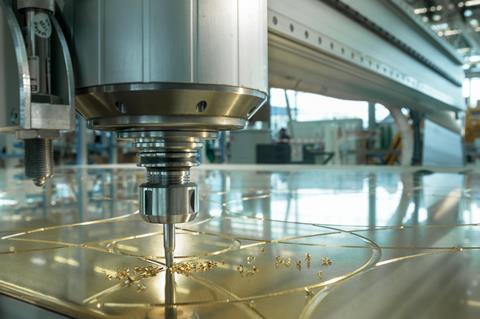
The alloy variants are numerous. They differ in their metallurgical properties and are standardized differently worldwide. The alloys are processed as plate, sheet or sections. Some alloys are available in all shapes and can therefore be combined very well. facade frame sections and sheet metal panels made from different brasses can take on different appearances after being exposed to the weather for several years. However, it is possible to coordinate the base material of different brasses in order to achieve a colouring that is as uniform as possible and a consistent ageing behaviour. As a facade construction specialist seele adjusts the basic material from different building components in advance, because otherwise the difference becomes apparent during usage. The ageing behaviour of the various components is more similar due to the use of matched alloys.
In addition, a sound knowledge of the mechanical and chemical properties of the alloys is important. The possible processing methods, such as simple milling or grinding, but also laser cladding methods, can only be carried out with selected alloys. Extensive technical process investigations and sampling enable a unique repertoire of component, material and process combinations for customer-specific requirements.
Using brass

Seele, for example, matched the alloys of the door handles and connecting plates for the St. Patrick’s Cathedral project in New York City, resulting in a homogeneous appearance. For the 82sqm internal facade, which separates a part of the chapel from the rest of the cathedral, seele realized the surrounding brass cladding of the facade, which was exactly adapted to the contour of the existing columns.
As far as machining is concerned, seele relies on welding, soldering, brazing and adhesive bonding as possible joining techniques. In terms of surface quality, bronze is generally better to weld than brass or special brass alloys. Patination is often achieved chemically by dipping, painting or brushing methods. For the TEC Bridge project in Toronto, for example, seele realized a 35m long steel-and-glass pedestrian bridge with dark patinated brass plates, into which circular ornaments were milled and subsequently the gold-brown patina was accepted in an acid bath.
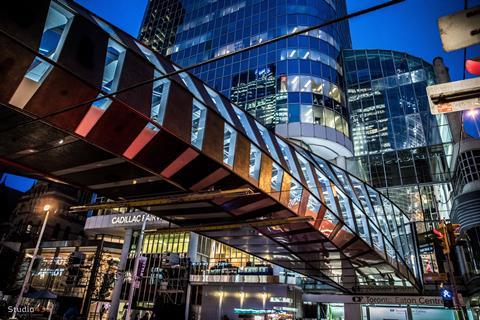
Internationally standardised material designation

Besides bronze and brass, copper is enjoying another revival in recent years due to its use by a growing number of architects. The use of copper alloys has a long tradition in the building industry. Copper and copper alloys are among the oldest technically used materials. In order to clearly identify copper alloys, various material abbreviations and numbers have been developed. Internationally, the ISO designation is regarded as the most universal designation. For Great Britain and the Commonwealth, the British system is used (PB number). For the planning operation, seele relies on a unique material designation through the ISO designation.
The materials bronze, brass and copper are of very high quality and are easy to recycle. From the point of view of natural, material-inherent ageing, recyclability and a typically long service life of such expensive materials, it is possible to speak of a sustainable material in the case of a high-quality, design-conscious use. As a technologically advanced facade construction specialist seele is able to meet the trend towards the use of these materials by means of material know-how and the latest production techniques.
Postscript
The seele group, with headquarters in Gersthofen in Bavaria, is one of the world’s top companies specialising in the design and construction of façades and complex building envelopes made from glass, steel, aluminium, membranes and other high-tech materials. The technology leader in façade construction was founded in 1984 by master glazier Ger-hard Seele and steelwork engineer Siegfried Gossner.
Based on a profound understanding of design and materials, seele provides everything necessary for ambitious one-off designs true to the original ideas of engineers and archi-tects. The seele group offers its building sector and industrial customers a complete pack-age of services ranging from R&D, individual advice and joint conceptual design right up to the planning, detailed design and construction of their projects. seele’s own production plants for technologically challenging designs and the group’s own erection crews on site provide a guarantee of the very highest quality “made by seele”.
The 1,000 employees of the seele group worldwide together generate an annual turnover of more than €250m (£225m).


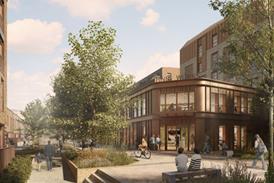

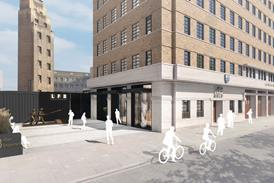
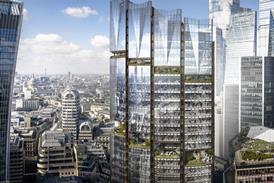







No comments yet